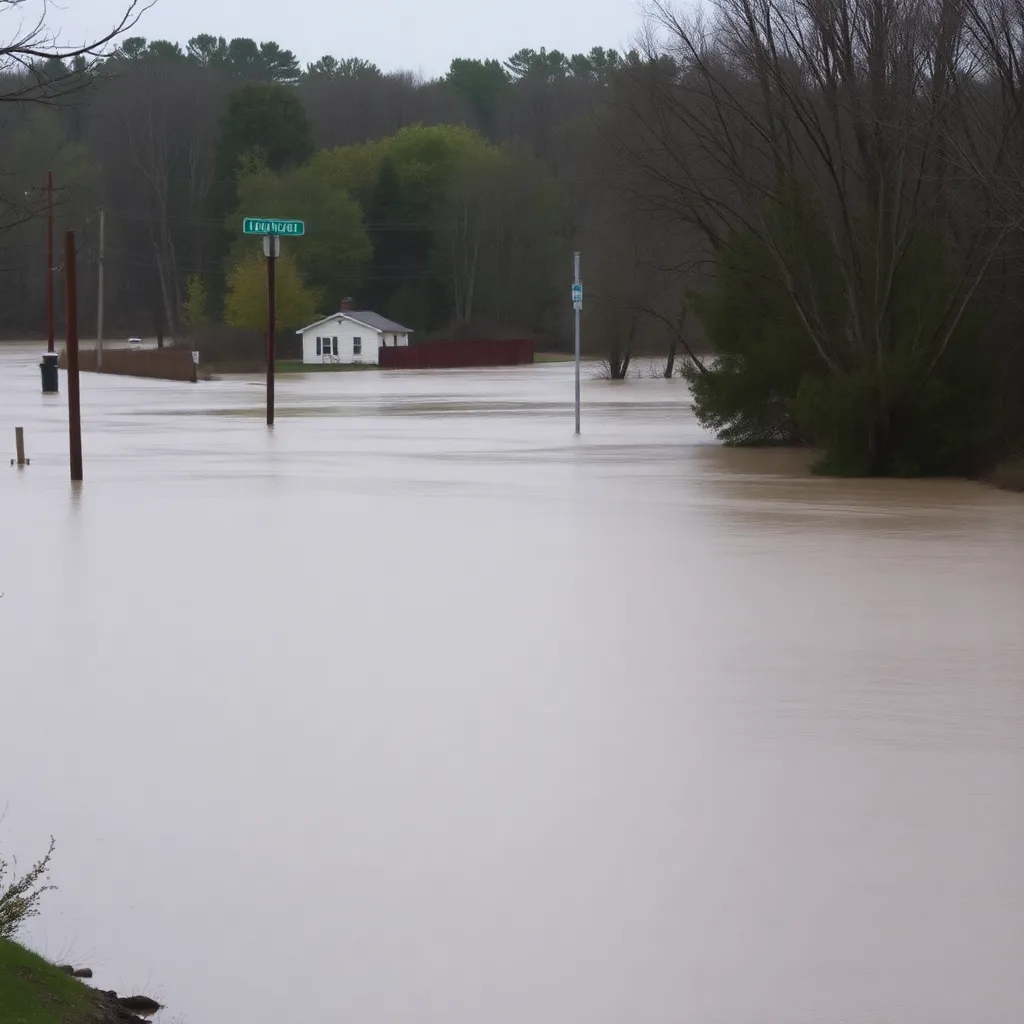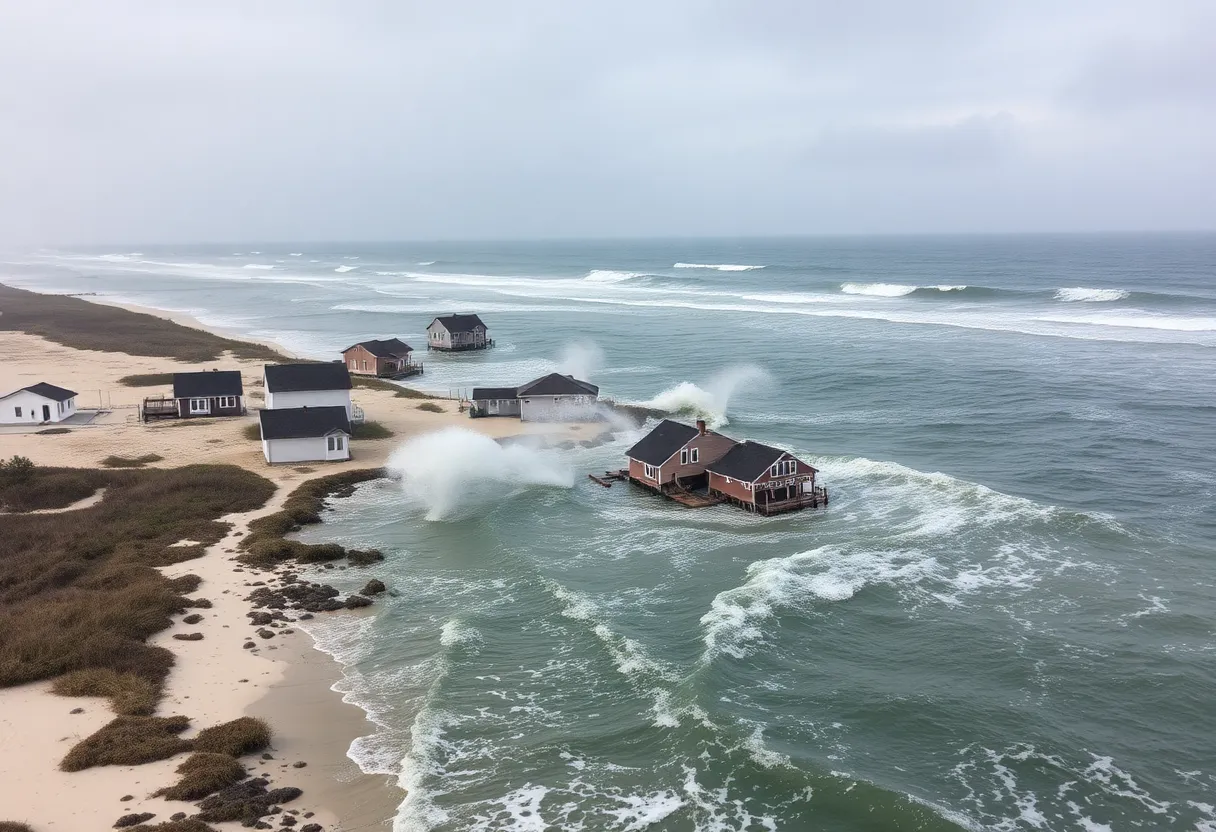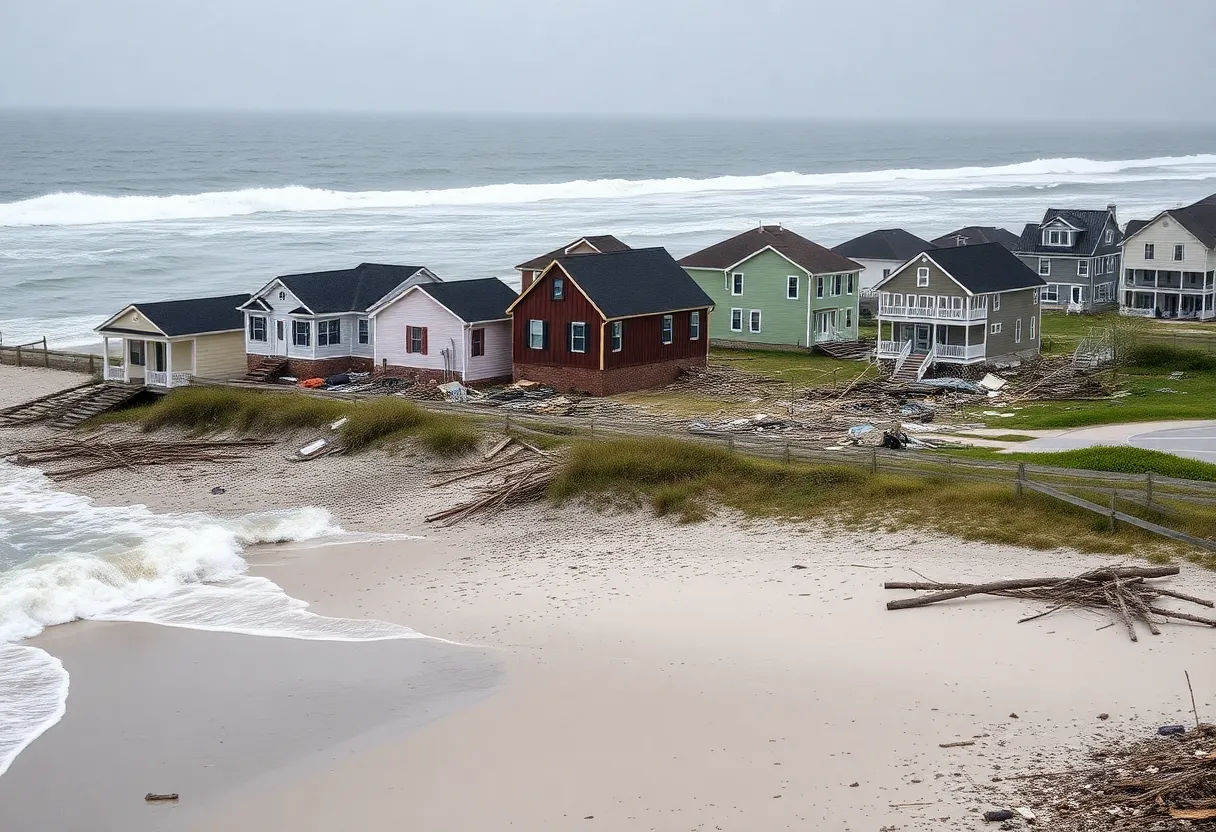North Carolina Faces Future Flooding Risks Amid Climate Change
Residents of North Carolina are looking at a future that may involve more water, and not just from the beautiful beaches they love. With climate change raising sea levels, there’s growing concern that parts of the state, especially along the coast and in the Outer Banks, are at risk of being submerged. An interactive map created by the National Oceanic and Atmospheric Administration (NOAA) highlights these potential flooding risks in a way that’s hard to ignore.
A Closer Look at the Interactive Map
This engaging map allows users to see how various locations across the U.S. could be affected as sea levels rise. By clicking on different streets or landmarks, people can view projections of how these places might look if they were partially underwater. Imagine standing on your favorite street and seeing a projected image of it submerged—this tool is designed to bring that thought to light.
Future Projections and Potential Impacts
The United Nations’ Intergovernmental Panel on Climate Change (IPCC) projects that by 2100, global sea levels could rise between 0.95 and 3.61 feet. Even more alarmingly, a rise of up to 6.6 feet “cannot be ruled out.” Just think about it: if sea levels were to increase by just 3 feet, the barrier islands and marshy coastal areas of North Carolina would face serious challenges, as this would likely bring flooding to numerous communities.
Things only get tougher if we consider a six-foot rise; this might fully submerge nearly all of the counties including Dare, Hyde, and Tyrrell. Larger cities like Wilmington, famous for its historic downtown riverwalk, wouldn’t be spared either. Just envision how iconic locations in the city could be washed away from view!
How is North Carolina Preparing?
Some communities have already begun taking steps to adapt to this uncertain future. For instance, the charming town of Nags Head on the Outer Banks is working on updating its zoning codes to incorporate rising sea levels into planning decisions. Aside from zoning changes, towns have also pumped sand onto the beaches to help widen them. These efforts can help protect and preserve the coastal areas, but they’re just the beginning as more needs to be done.
The Uncertainty of Sea Level Rise
It’s essential to remember that these projections are best estimates. The rate at which sea levels will rise is still a bit of a guessing game and will heavily depend on what actions are taken—not only locally but also globally. Experts like David Thornalley, a climate science professor, remind us that the year 2100 is closer than we might think, and severe impacts are a possibility if we don’t work to reduce greenhouse gas emissions.
NOAA oceanographer William Sweet pointed out the importance of their Sea Level Rise Viewer, noting that it’s a versatile tool offering a glimpse into how coastal communities are already being affected by rising sea levels and extreme weather. High tides, driven by decades of rising water levels, are starting to inundate wetlands and flood streets in several U.S. coastal towns.
What’s Next?
As North Carolinians cast their eyes toward the horizon, the threat of rising sea levels looms large. Understanding and preparing for these changes is not just a local issue but a shared global responsibility. Communities across the state will need to band together, employing smart planning and innovative solutions to safeguard their homes and heritage. The tide might be rising, but with awareness and action, they have a fighting chance to stay afloat.

Author: STAFF HERE OUTER BANKS WRITER
The OBX STAFF WRITER represents the experienced team at HEREOBX.com, your go-to source for actionable local news and information in the Outer Banks, Dare County, and beyond. Specializing in "news you can use," we cover essential topics like product reviews for personal and business needs, local business directories, politics, real estate trends, neighborhood insights, and state news affecting the area—with deep expertise drawn from years of dedicated reporting and strong community input, including local press releases and business updates. We deliver top reporting on high-value events such as the Outer Banks Seafood Festival, NC VIP Fishing Tournament, and NCBBA Red Drum Tournament. Our coverage extends to key organizations like the Outer Banks Chamber of Commerce and Outer Banks Community Foundation, plus leading businesses in tourism, retail, and hospitality that power the local economy such as Kitty Hawk Kites, Outer Banks Mall, and Avon Fishing Pier. As part of the broader HERE network, including HEREAsheville.com, HERECharlotte.com, HEREGreensboro.com, and HERERaleigh.com, we provide comprehensive, credible insights into North Carolina's dynamic landscape.





